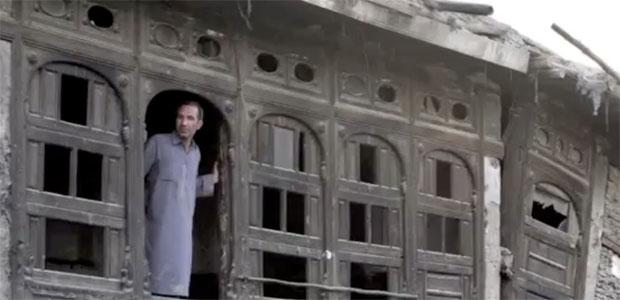Slideshow: Rebuilding Kabul
Peacock House (Photo: Turquoise Mountain Foundation)
Five years ago, parts of downtown Kabul resembled a slum, with heaps of garbage and rotted and broken down buildings. Today, the scene is different. The buildings have returned to their former beauty and it’s all because of a massive restoration project. Laura Spero reports from Kabul, Afghanistan:
Rahmatullah Oryakhel spent years designing modern structures in Kabul’s urban landscape, but a few years ago, the civil engineer started coming home covered in mud.
“When I came first here the area was so dirty smell and flies and everything, dust everywhere”, he says.
“Here” is Murad Khane, a historic trade town near a row of tire shops and metal-smiths along the Kabul River. When Oryakhel was hired to help refurbish Murad Khane’s traditional mud and wood buildings in 2006, he wasn’t even familiar with restoration rules which require using the same materials and construction methods as when these old buildings were first erected a century and a half ago. His first assignment was in a dilapidated building called the “Peacock House,” which had once been an affluent home.
“The building was in such a condition that we used to climb to the top floor single person at a time-we were worried that it would fall down. And when I started surveying, there in the Peacock House we find out that these are built by very clever masons, carpenters joiners and the designers had a very peculiar taste”, says Oryakhel.
“I discovered that that building was really a very precious, fantastic buildings. And that day I thought I should work here for some time to know these buildings and to preserve our history”.
Oryakhel has worked on two buildings in Murad Khane: first the Peacock House, and then, the Great Serai, an elaborate merchant’s home with three courtyards.
“This building is one of the buildings that we don’t have similar like this in the whole Kabul. It’s about 100-150 years old. When you move around the building you find very tricky parts and when a new person came here most of the time they can’t find the way to outside”, he says.
At Kabul Polytechnic University, where Oryakhel studied, the curriculum does cover some traditional Afghan building styles, but not many. Murad Khane was a new challenge for him.
This is a lot of time-taking. First you have to do a lot of research to repair a small piece of the building-so you have meet the old people in the area to find out who worked this, which mason. You cannot plan exactly the time in which you will finish because when you starting working, excavating, you find out that something else is also wrong. You have to repair that also.
Some of Murad Khane’s surprises have been dangerous. One day a log broke beneath a building that had been jacked up to repair the foundation. The entire structure crashed down a few inches.
“Half of us were inside the basement and half were outside and I shouted on everyone their names and fortunately everyone answered my sound, and we were not hurt, any one of us”.
Walking through Murad Khane today, maybe what’s most striking is that all of these exquiste buildings were already here, buried under six feet of garbage, just waiting. A section of debris has been saved in a glass case; it looks like a layer cake made of rotted wood, plastic bags, and unnamed refuse. Just five years ago the top of this tower was ground level; now, it climbs about halfway up a smooth wall.
“After some time I got attached with these buildings-and when I went to home, they see me that he is covered from top to bottom with mud. And they ask questions, what you do father? And my wife one day she said, are you an engineer or are you a labor? And I told her, don’t ask these questions. I explain for them that what I am doing needs somebody to do it because I am saving my culture, I am saving my history-and I think gained a lot of knowledge in to myself ” says Oryakhel.
